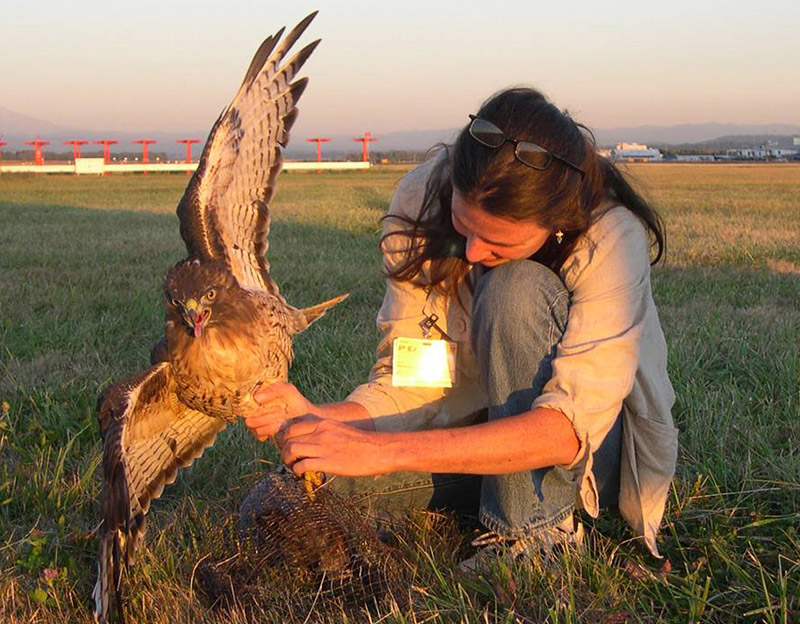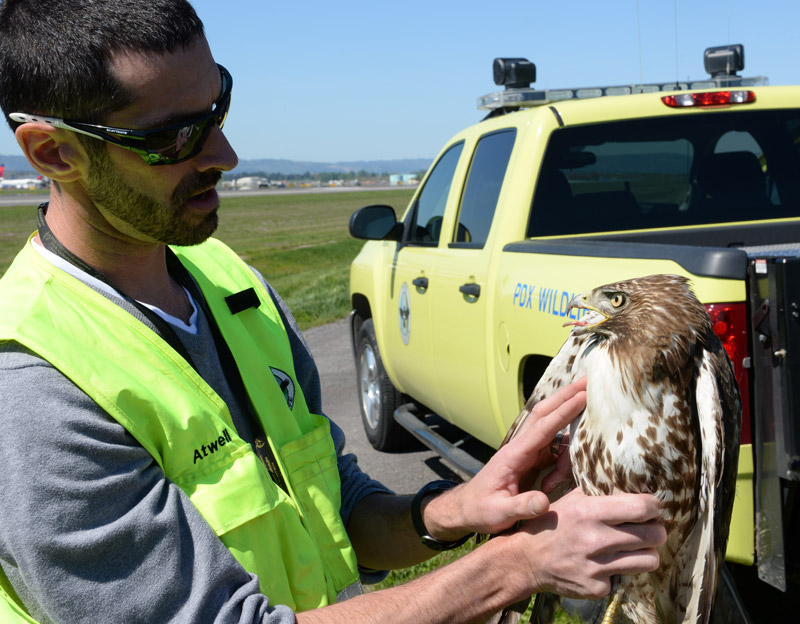Wildlife hazard management program

The overall objective of our Wildlife Hazard Management Plan (WHMP) is to develop an integrated and adaptive program that manages risk at all of the Port’s airport facilities by reducing the probability of wildlife and aircraft collisions.
It is recognized that the risk of a bird strike at PDX can never be completely eliminated. PDX is the largest greenspace in the metropolitan area, located on the Pacific flyway and at the confluence of two major river systems, all of which serve as major movement corridors for migratory and resident birds.
The underlying premise of the WHMP is that it is possible to manage the risk to an acceptable level. The intent of the program is to provide the necessary direction to do so, in a scientifically sound manner.
We are working internationally to share best-management practices to improve aviation safety that minimize harm to wildlife in support of program development at other airports
Raptor Monitoring

Red-tailed hawks are common North American raptors and are one of the raptor species most frequently observed at airports.
At PDX, red-tailed hawks occur as year-round residents, spring and fall migrants and wintering and transient birds. Active capture, banding and translocation from the airfield is one on-going method used to manage risk, particularly during spring and fall migration when non-resident red-tailed hawks are most numerous.
An important component of our Raptor Translocation Program is knowing where the birds settle after they are released. We gather data by engaging the community through our PDX Raptors website. Participants log raptor sightings from around the region. The citizen science data supports the selection of successful release sites to lower raptor return rates to PDX. Engaging the birding community is an important element to our success and protects birds, keeping them away from the dangerous airfield environment.
We have captured and released approximately 1,900 red-tailed hawks since 1999. While not as frequent, the program manages other raptor species as well, such as American kestrels. In total, we have translocated fourteen different species and 3,050 individual raptors between 1999 and 2025.
For more information, visit our Raptor Translocation Program website.
Engaging stakeholders
We monitor birds on our properties in accordance with the International Migratory Bird Treaty Act and the Bald and Golden Eagle Protection Act in cooperation with the US Fish and Wildlife Service.
- Bird Alliance of Oregon
- US Fish and Wildlife Service
- USDA Wildlife Services
- Oregon Department of Fish and Wildlife
- Federal Aviation Administration
- Oregon Department of Aviation
- Oregon Air National Guard, 142nd Wing – ORANG
- City of Portland – Bureau of Environmental Services
- Oregon Parks and Recreation Department
- Mt. Hood Community College
- Oregon Humane Society
- Portland State University
- Multnomah County Drainage District